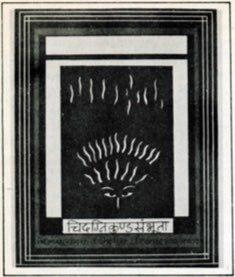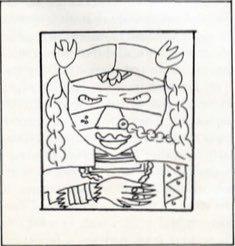A Step Towards Control over Media
Chandralekha
There is a myth that cultural and media forms are meant only for highly trained experts. People hesitate to explore their own creativity and capacities. Through a series of training workshops SKILLS, a Madras (India)-based group, has tried to demystify these notions by making people conscious of their own capacities and showing that creativity is not the monopoly of a select band of people. It is a common possession that humanises the very content of politics.
SKILLS has found that screenprinting, in its basic and elementary forms, is a useful tool for generating self-expression and self-sufficiency. It is an easy way for making posters which can be used as a forum for discussion enabling people to
- concretise their ideas
- initiate discussions
- collectivise initiatives
- express their creativity
Screenprinting is seen by SKILLS as a definite aid for activists who want to work and interact at the level of education, health, injustice, domestic violence and creativity. The process is seen as a motivation for participants to explore their own talents, simultaneously cutting off dependence on commercial artists, printers and sophisticated and expensive technology which, while playing the middle man's role, dilute or distort the message so that it loses all immediacy of purpose.
Posters, handbills and visuals have proved their usefulness and importance in helping struggles, and it is often a strenuous job for groups with no access to printing facilities or finance to make these by hand. The whole exercise has been found to be backbreaking and requires a large group to execute it. On the other hand, even when resources are available, a commercial printer might hesitate to print your material. In such situations to be able to communicate directly through visuals, to be able to react immediately to an incident or an issue through a poster made and printed on the spot, can be a uniting and mobilising force.

The screenprinting process demonstrated and taught by SKILLS at different workshops is developed with the idea of consciously bypassing all expensive materials and processes to find solutions closer to the needs of people working towards change at the rural and urban levels. To be able to express oneself freely without waiting to achieve mechanical perfection is enough to communicate a sense of power. Thus, using a screen made of an old nylon or cotton sari, using inks that could be cooked by oneself, choosing from a wide range of locally available materials from powder colours like gheru (brick red) to textile stains and vegetable dyes, thereby dramatically cutting the heavy cost of inks and commercial processes, converting most of the sequences to hand operations and thus retaining a certain direct contact with the senses — all contribute to create a certain ease and freedom with the process, immediately making it a viable proposition.
Visual thinking is the main aspect of postering. We must think conceptually and in symbols and images. All verbal ideas have to be converted into visual images with minimum use of words. While speaking and writing can be discursive and elaborate, visual expression must deal with the essentials and compress and condense the message till it becomes so compact and tight that it has no other choice but to explode. For this the most important and central point of the message has to be isolated and stated directly without unnecessary frills and decoration. The images and symbols used need to have a certain universality in order to be broadly understood and accepted.
Precision, brevity and tight editing require tremendous clarity, and are impossible if the idea itself is muddled. So the communicator has to be absolutely clear about the message he or she wants to put across.
Women as Consumers of Anti-Women Media: A Poster Exhibition
As part of the National Conference of Women Against Oppression (Bombay 1980), SKILLS organised a workshop on the use of posters. To initiate a discussion they prepared an exhibition of hand-made, screen-printed posters. The theme was 'WOMEN AS CONSUMERS OF ANTI-WOMEN MEDIA'. The questions posed were:
- Why do women consume the anti-women content of media?
- Why do they read magazines which portray them as subservient, weak, backward, unintelligent, helpless, dumb?
- Why do they subscribe so heavily to the magazines that project them as types, and not women?
- Why do they consume a distorted image of women?
- Why do they advertise men's wear — underwear, suitings, shirting, ties, razor blades, after-shave lotions, potions?
- Why do they participate in their own debasement?

The posters projected women's historical conditioning as also the traditional, social and economic pulls and pressures on them. When we say 'Women hold up half the sky,' it is essential for us to know that half the consumers of the distorted image of women are women. If women were to stop consuming the dope doled out by the media that thrives on massive female readership and subscriptions, would the market not crash?
Similarly, consider the example of rape sequences in Indian movies. Rape is one of the most glamorised items in the Indian movies and has a tremendous sale value. I once heard a well-known film-maker say: 'I have two unusual rape scenes in my film. One is a rape scene in a rice field and another, a rape in pouring rain.'

One can understand men consuming commodified rape scenes: they could well give them vicarious pleasure. Inflate their maleness. Give them a sense of participation in the act. Make them identify themselves with the performer. But what do women get out of a rape scene? How do they feel? How do they see themselves? How are they 'entertained' by seeing a woman being raped? How do they see these rape sequences sitting beside their husbands? Why don't they protest? Why don't they boycott the films that project them as objects of rape? We have to understand this phenomenon.

We need to look into many areas where women themselves are consumers of anti-women media. Film posters too, boost the image of male power through aggressive positions, tight clothes, leather belts, weapons, larger than life-size cutouts of male actors standing against the city sky. Also worthwhile, is observing the attitudes of women vis-a-vis men in the same posters.
We need to understand how a distortion of reality is achieved through
- idealisation
- escapism
- catharsis/emotionalism/sentimentalism/sensationalism
We need to understand how, through a massive package of distortion of reality, the media perform the function which, in a different sense, narcotics and dope perform — i.e., evacuating the mind and delinking it from the social context. Within this media package the most exploitable, saleable, convenient, easily and cheaply available item for manipulation of ideology in commercial terms, is the image of women. The ingredients of this recipe, this appetising dish, are various types in media — magazines, advertising, TV, radio.

- Wife/mother/daughter type who suffers, cries, bears, sacrifices
- Glossy and plasticised doll/vamp type who projects an image of pure sex, glamour and sophistication
- Wild/violent type who projects sex and violence.
This type has certain links with the free and militant woman, a fighter. But the idea of freedom and militancy is distorted and turned upside down. Some examples of this type in Tamil films are Revolver Rita, Gunfight Kanchana, Chaattai Rani. The ultimate goal of such 'free' women is romance, marriage, reformation, confirmation. The wild woman finally is subdued, tamed, subordinated into a norm and conquered through marriage. It is a 'happy' ending.
The question was posed: Why do women continue to buy media which is antagonistic to them, which degrades, debases and exploits them? What kind of historical and cultural conditionings determine this? The posters SKILLS had made were very effective in triggering off a lively discussion on all the above issues. These posters were an example of how media can be a powerful tool in the hands of feminists and other social action groups to raise certain issues, to mobilise public opinion and to organise action.
Since 1980 SKILLS has organised several such workshops and has trained many activists in poster making.

